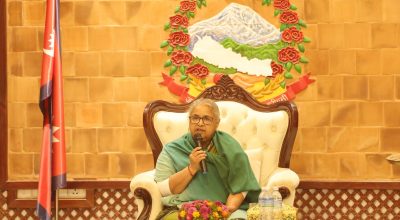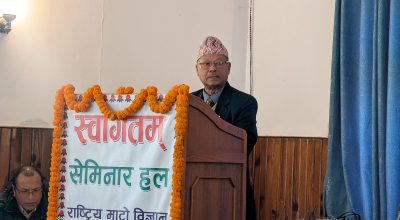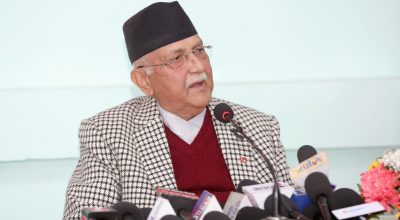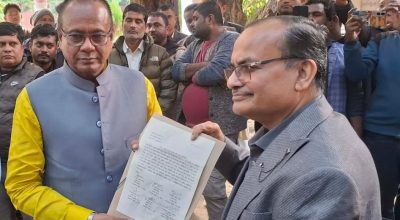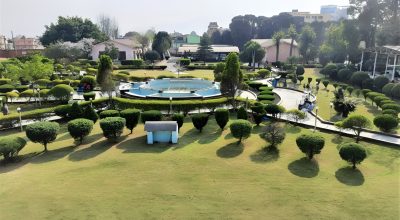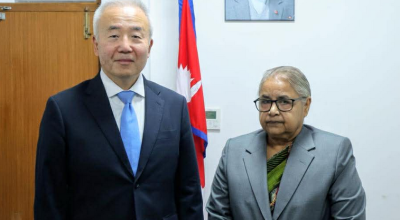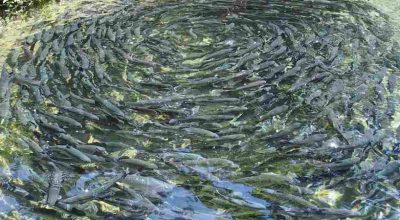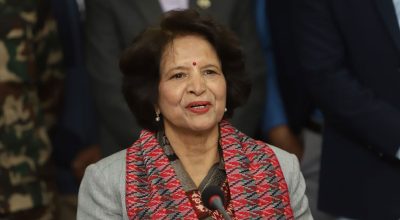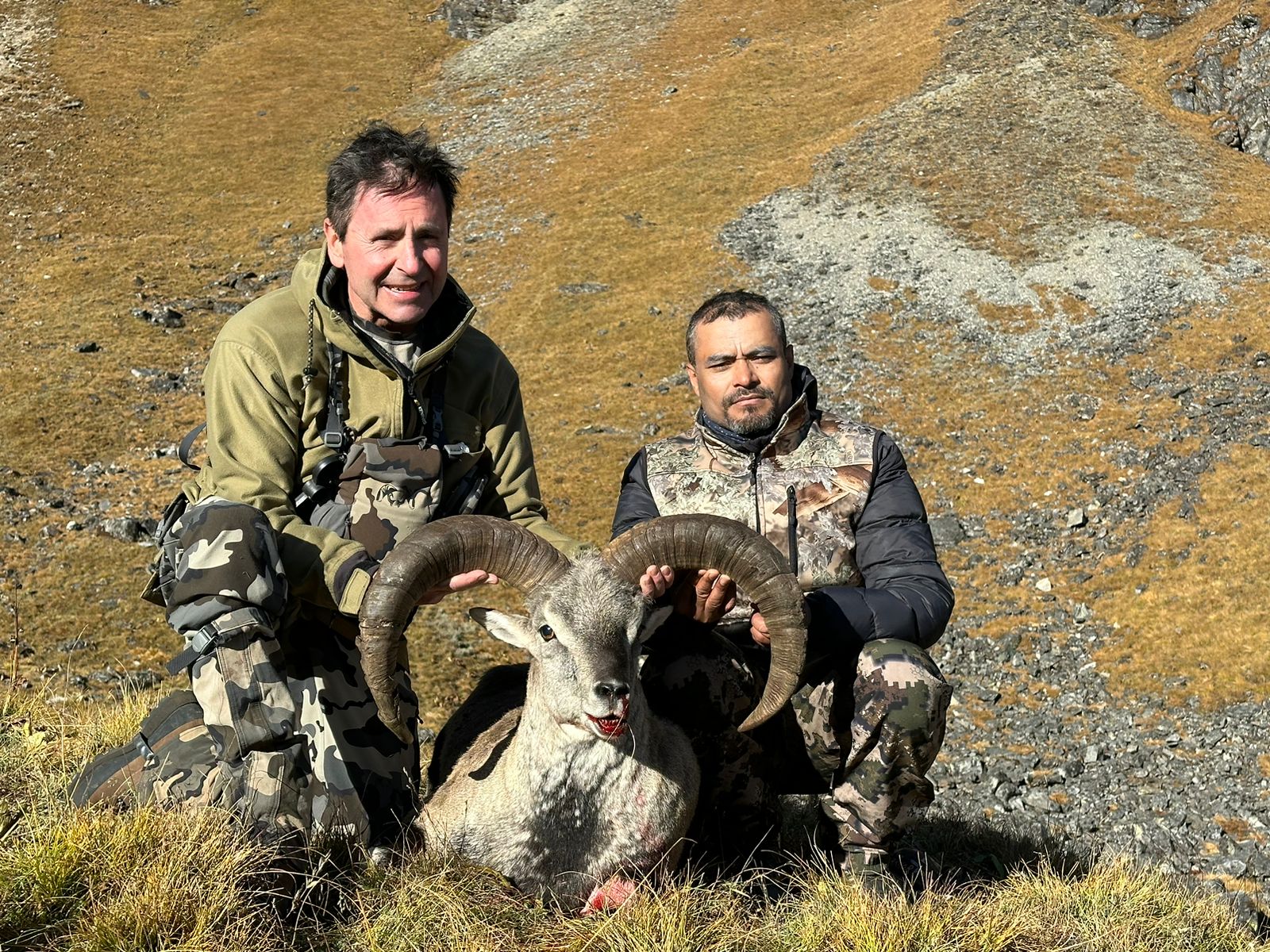
Kathmandu, Oct 19: The first hunting season has begun in Nepal’s only Dhorpatan Hunting Reserve, allowing the hunting of blue sheep or Naur, Himalayan thar or Jharal, and wild boar.
The Department of National Parks and Wildlife Conservation under the Ministry of Forests and Environment has permitted the hunting of 12 blue sheep, 8 Himalayan thar, and 11 wild boars for this season.
Hunting in the reserve is conducted in two seasons: the first season from Ashwin to Kartik (October–November) and the second from Chaitra to Baisakh (March–April).
The first team, led by Nepal Travel Expedition Company, arrived in the reserve on October 9 for this season. An Australian citizen, through this company, was the first to hunt a blue sheep. The average weight of a blue sheep is over 70 kg. Three other companies are in the process of heading to the reserve for hunting.
According to Senior Management Officer Pemba Sherpa, 12 foreign hunters from four companies have obtained hunting permits for this season. The department sets revenue rates on competitive way. Currently, the minimum fees are Rs 150,000 for a blue sheep, Rs 75,000 for a Himalayan thar, and Rs 10,000 for a wild boar.
Companies acquire hunting permits through a bidding process where bids can exceed the minimum rates. The highest bid for a blue sheep this season is Rs 1.23 million, and Rs 725,000 for a Himalayan thar, according to Officer Sherpa.
Revenue exceeds Rs 14.5 million
“Hunters must obtain a permit to hunt wild boar along with blue sheep, although most foreign hunters are not particularly interested in hunting wild boar,” said Officer Sherpa. “However, they are required to pay the minimum fee of Rs 10,000 for the wild boar hunt. The total revenue from hunting blue sheep, Himalayan thar, and wild boar this season amounts to Rs 14,592,400.”
Hunting companies also contribute to wildlife conservation by donating a portion of the fees to local communities for the hunting of blue sheep and Himalayan thar. This not only brings foreign currency into the country but also promotes tourism in the local area. To facilitate hunting, the department issued a 15-day public notice on 19th Bhadra to call for sealed bids for this year’s first season.
Amrit Thapa, the owner of Nepal Travel Expedition, who has been involved in this profession for over 20 years, mentioned that despite the geographical difficulties, hunters enjoy a unique experience in this renowned reserve. He suggested modernizing and simplifying the legal processes related to weapon permits and hunting procedures.
Hunters must go through several government agencies, including the Department of National Parks, the Ministry of Forests, and the Ministry of Home Affairs, to complete the formalities and it can take up to six months to take the trophy (head, horns, skin, and hooves) abroad.
Thapa further emphasized that due to the limited hunting quota, new hunting destinations should be introduced, poaching should be controlled, local awareness should be raised, and locals should be involved in monitoring and wildlife counts to strengthen ownership of the reserve.
The Dhorpatan Hunting Reserve is globally famous among professional foreign hunters. With written permission, hunters can hunt blue sheep, Himalayan thar, and wild boar within designated areas and time periods. Hunters are given 14 to 21 days for hunting, and they bring their own licensed guns and ammunition from their home countries. A team of 25 to 30 support staff assists each hunter during this period.
Each hunter spends between USD 30,000 to USD 35,000
Hunting in Dhorpatan is an expensive endeavor as hunters must travel by helicopter and require a team of over two dozen support staff. Hunting companies charge between USD 30,000 and USD 35,000 per hunter. The majority of foreign hunters come from the United States, Mexico, France, Spain, Russia, Hungary, Ukraine, Canada, Germany, and other countries.
After the hunt, hunters legally take the trophies (head, horns, skin, and hooves) with them, while the meat is consumed by the group in the forest, and any waste is buried.
According to Senior Conservation Officer Birendra Prasad Kandel of the reserve, animals such as ghoral and serow also inhabit the reserve but are not permitted for hunting as they are listed under the CITES convention. The reserve is divided into seven blocks—Sundaha, Seng, Dogadi, Barse, Fagune, Surtibang, and Ghustung—for hunting purposes.
Challenges such as declining grazing quality, encroachment, poaching, increasing demand for firewood, wildfires, lack of research, harsh weather conditions, and the impacts of climate change have been identified as major issues for the reserve, according to Officer Kandel.
“Allowing controlled hunting helps prevent the overpopulation of animals, which could otherwise damage their habitats or cause significant harm to local crops,” he explained.
Hunting is limited to older male animals
A wildlife count is conducted every five years to determine the number of animals that can be hunted. According to the 2021 count, there are 1,290 blue sheep and 744 Himalayan thar in the reserve. Based on scientific methods, quotas are set for hunting older male animals, typically those over 12 years old, which are identified using telescopes. Quotas are established annually, and hunting permits are issued through a competitive bidding process.
The Dhorpatan Hunting Reserve, established in 1988, covers an area of 1,325 square kilometers and spans parts of Rukum East, Baglung, and Myagdi districts. The reserve is home to 32 species of mammals, with blue sheep, Himalayan thar, and Himalayan black bear being the main species. Additionally, the reserve hosts 164 species of birds, including the endangered and protected species such as the danphe, munal, and chir. The reserve was designated for hunting to promote the sustainable use of wildlife while ensuring their conservation.
In the previous fiscal year, permits were issued for hunting 19 blue sheep and 11 Himalayan thar, generating a total revenue of Rs 42.68 million, according to the department’s records. #hunting #nepal #dhorpatan





